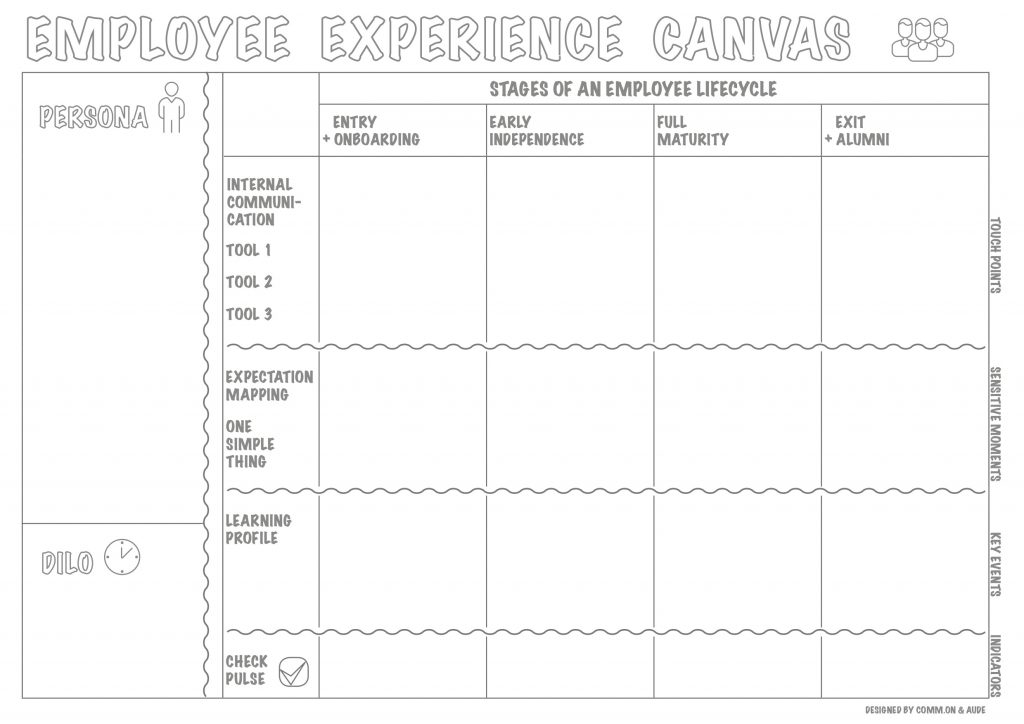
How do you extract the images that shape your employees opinion about the company from the noise of everyday experiences? Download a tool that will help you get a clear picture of this information flow, and will be a starting point to drawing an experience map.
During each journey you ‘experience’ and experiences always leave an imprint– a record of memories and associations. It’s a little bit like Facebook Wall or your Instagram profile – you have hundreds of points registered e.g. in the form of entries and photos, which form your stream of experiences. Scanning the ‘stream’ we can see which moments are important to a given person.
Let’s treat working at a company as a journey. For some, it is a life-long expedition, for others – a short trip. In both cases we generate ‘key moments’ which build our opinion about the company. These are the moments that formulate our opinion about the atmosphere at work, which spreads beyond the company…
When someone asks: “How do you like this company?” you won’t tell them the whole history of your work, but will choose important moments instead, e.g: “we had personality tests in the recruitment,” “they finance your MBA after two years,” “they have a great talent program” or “there is practical training.”
We don’t get to know what happens exactly in every single moment of the journey, but you can see what was important during the journey, what was unique, emotional enough to share this with others when formulating an opinion about the company.
The best engagement carriers are emotions. When emotions are high we tend to remember a given moment as something important. We don’t speak using the information from corporate brochures or slides, but describe key moments: our emotions on the first day at work, adrenaline rush during team building events, unexpected moments at team meetings, manager’s reactions, important talks, being recognizes and small moments, such as everyday conversation with someone important to us while sipping a cup of coffee.
Need an example? I recently heard a description of working experience at one of IT companies which stated that it’s important to be able to train crossfit. This was enough to create an image. We think with moments and images. Even though this person spends 98% of his time sitting by a monitor, an important experience image for him is the ability to take part in a functional workout and this is the ‘experience postcard” he is sending out.
In a world where people speak with rates which give us a sense of control, this stream of experience is difficult to grasp – and to define. It’s like a postcard from summer holiday… would be impossible to describe everything.
We offer you an “Employee Experience Map,” which allows you to put in order your thinking about employees experience in a postcard-like way, using three dimensions:
We apply all this to the employee life cycle. It’s worth remembering that the better you understand your employees and the more detailed profiling of employees, the more valuable this material will be.
…and each conversation in an organization needs a structure – including conversations about employee’s experience. The map of experiences is a kind of simplification. You can compare it to a traditional paper map, which depicts a given area, it is the area’s reflection and not the area itself. Even the fact you start to talk about it is an opportunity to make improvements in the company.
As with every journey, there are various tracks leading to one place. Most of us probably draw conclusions about employees’ experiences from so called organizational health surveys or employee engagement assessment. You can also interview your employees individually, use a diary panel… shortly speaking, there are many ways to assess the corporate reality. Here’s what works for us: a canvas that we work on and use its elements during 3-6 workshops. The method focuses on conversations with employees, learning their experiences and profiling based on their work style.
If you want to have something more quantitative – a kind of organizational Google Maps – here you go: Social Network Analysis, People Analytics, or even obtaining data about your employees’ routine in real time using so called wearables.

What we share with you is the motif. Design Thinking fans will know how to use it and what PERSONA and DILO stand for. If you need a half-day (4-6h) workshop introducing the subject of employee experience mapping and designing, feel free to contact us.
Kategorie: school of contentic